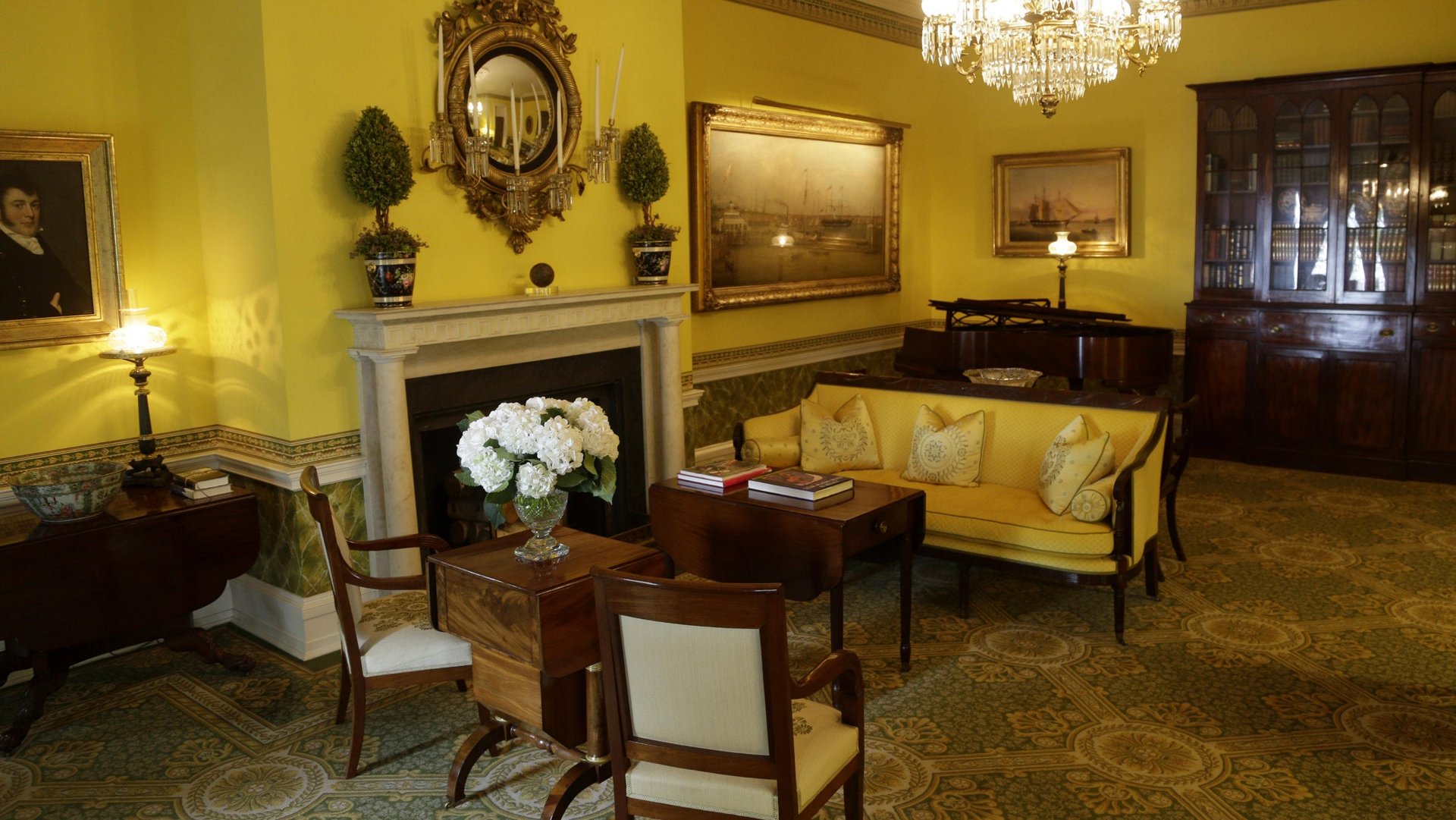The time has come for mayors to ditch their mansions
Detroit’s Manoogian Mansion poses a particularly awkward conundrum, as mayoral manses go. The 4,000 square-foot home on the Detroit River has the typical trappings of an official residence: the multiple dining rooms, the sweeping driveway, the neatly manicured grounds. But this isn’t just any mayoral mansion—it’s a city-owned estate (requiring more than $100,000 in annual upkeep) in a city infamously short on cash.


Detroit’s Manoogian Mansion poses a particularly awkward conundrum, as mayoral manses go. The 4,000 square-foot home on the Detroit River has the typical trappings of an official residence: the multiple dining rooms, the sweeping driveway, the neatly manicured grounds. But this isn’t just any mayoral mansion—it’s a city-owned estate (requiring more than $100,000 in annual upkeep) in a city infamously short on cash.
To make matters worse, Detroit cannot sell it. When the property was gifted to the city in the 1960s, the deed included a prohibition against unloading it. So what’s a newly elected mayor in Detroit in 2014 to do? Or, as Bill McGraw put it for Deadline Detroit:
In a bankrupt city with an enormous amount of poverty but without enough cops, ambulances or streetlights, should the mayor live in a city-owned house on the river that has 15 rooms, an awesome backyard, boathouse and cabana?
Newly elected mayor Mike Duggan, as it turns out, is planning to move in. His New York City counterpart Bill de Blasio—a man who campaigned against inequality—has announced he’ll do the same at Gracie Mansion in Manhattan.
It’s hard to fault either for choosing to live in a house that had long ago been chosen for him. The decision is potentially problematic either way. Move in to the mansion, and you look like you’re embracing the luxury attached to public office at constituent expense. But stay in your own home (a Brooklyn row house for de Blasio, a home in tawny Palmer Woods for Duggan) and you look like you’re flouting tradition. Mayoral mansions are also supposed to offer suitable setting and space for official business a mayor might not want to conduct in his personal living room.
The whole idea, though, feels increasingly outdated in an era of steep budget cuts (whether a city is going through bankruptcy for not). And there’s good evidence that Detroit and New York don’t need mayoral mansions anyway: Hardly any other major US city has one. Los Angeles is one exception; new mayor Eric Garcetti opted to move his family into the Getty House earlier this year. But Chicago has none. Neither does San Francisco. Washington, D.C., considered acquiring one about a decade ago but ultimately balked at the taxpayer cost.
Previous New York mayor Michael Bloomberg made a show of refusing to live in Gracie Mansion (although this was hardly a concession to modesty on his part). He then awkwardly declared that no other mayor should, either, compounding de Blasio’s difficulties. Governor’s mansions are much more common, but increasingly, no one wants to live in those, either.
So why have them any more if they mostly serve to put newly elected officials in an uncomfortable spot on the very first day in the job? The tradition of mayoral mansions—where they do exist—isn’t even that old. L.A’s Getty House was built in 1928 and donated to the city in 1975. The Manoogian Mansion was only given to the city of Detroit in the 1960s. And Gracie Mansion’s history as an official residence dates back only as far as the early 1940s.
James Nevius has a great history in Curbed NY of how Gracie Mansion became Gracie Mansion, even against the objections of then-mayor Fiorello La Guardia. The idea was actually the brainchild of a scheming Robert Moses, who had more of a taste for opulence than the city’s actual mayor (as Nevius writes: “As a bonus, since the house sat in a city park, it would make Moses the mayor’s de facto landlord. Yes, Moses really did think that way”). At the time, a mayoral mansion made some sense for other reasons, too, via Nevius:
What finally pushed the city into action, though, may not have been Moses at all, but instead the country’s entry into World War II. Not only was New York considered a prime target for Nazi bombing, but the mayor—appointed by FDR as the head of the Office of Civilian Defense—was a high-profile figure. Putting him and his family in an off-the-beaten-track location, surrounded by a stout six-foot iron fence, probably seemed like a prudent move.
Hardly anyone argues today for official mansions on security grounds. So if they’re not truly all that historic, and the grandeur that was part of their initial allure no longer feels appropriate for a modern mayor, why don’t we just let these guys off the hook? Have them live wherever they want. Any home a mayor chooses for himself will say a lot more about him (or her) than whether he chooses to live in the city’s house.